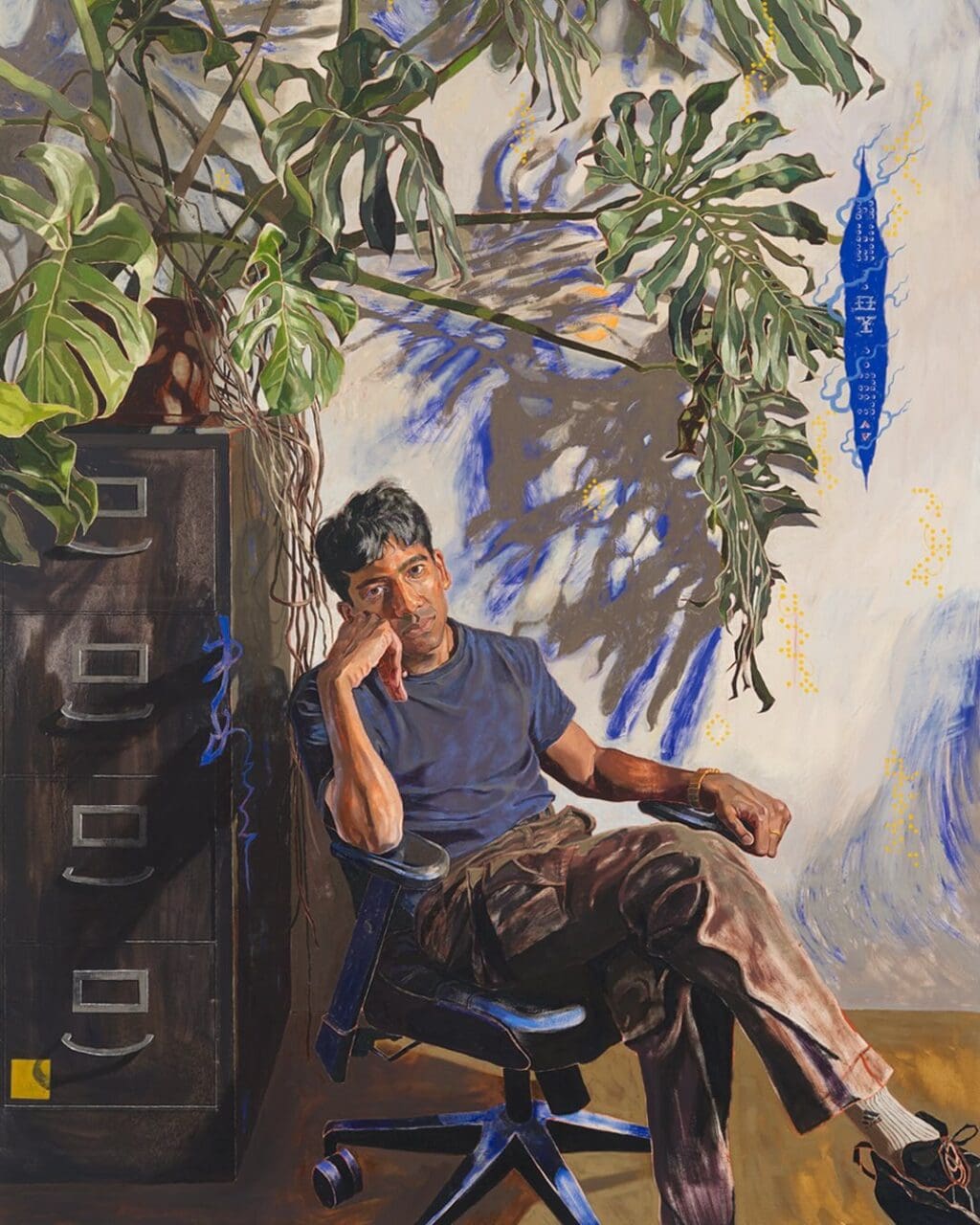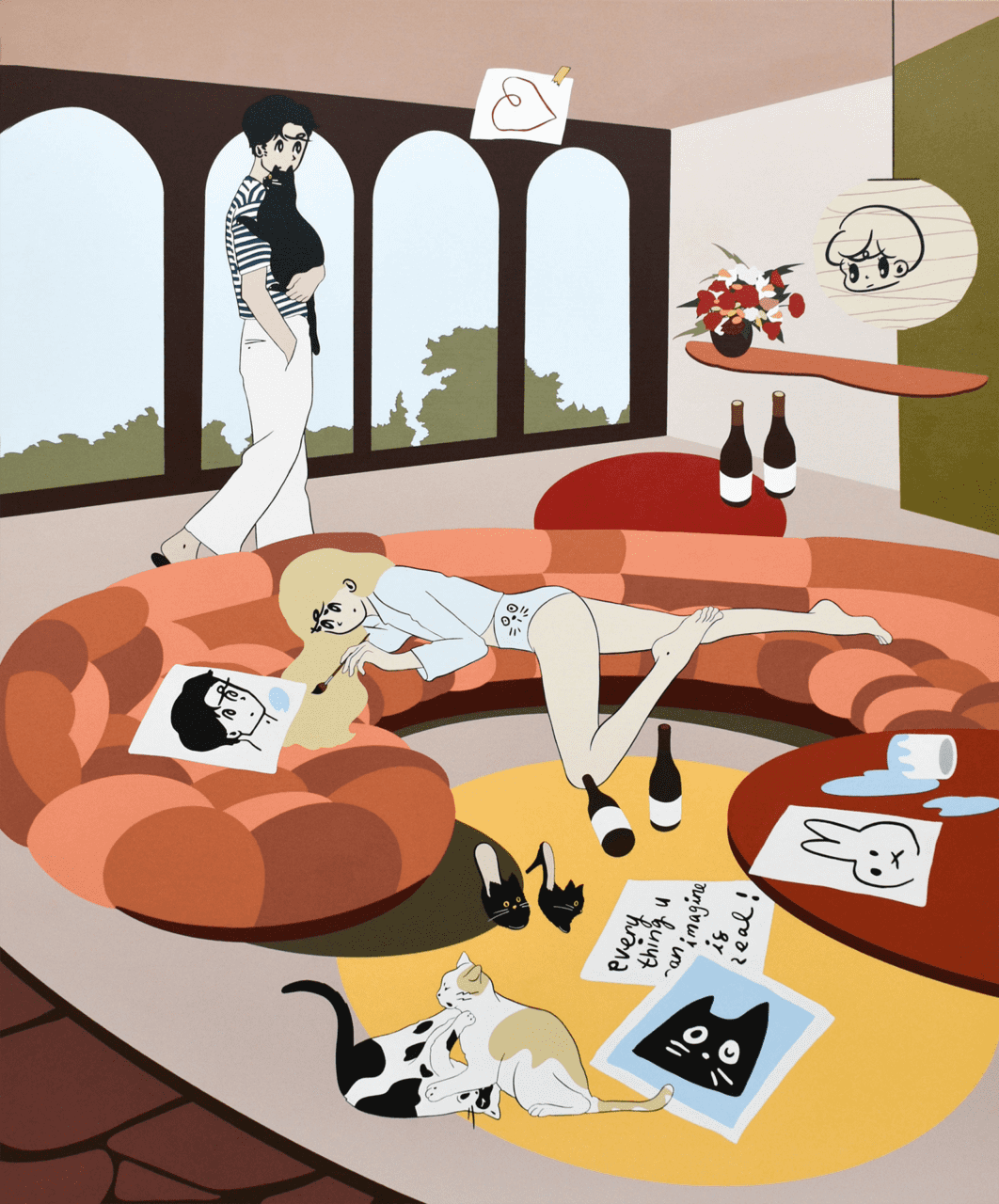The photos from the seaside set in Brighton, England, began trickling in this past spring: Harry Styles and Emma Corrin, frolicking in the surf, shooting the forthcoming drama My Policeman. The project marks a new addition to Styles’s résumé as an actor and Corrin’s first film since appearing in The Crown, but as thrilling as the images are, the source material, Bethan Roberts’s 2012 novel of the same name, is even more stunning. Inspired by the buzz generated by the film version, My Policeman was released for the first time in the U.S. in August, drawing a whole new readership into its sweet agony.
In print, My Policeman is akin to Brokeback Mountain–in–Brighton, an angst-ridden triangular love story between the titular bobby, Tom; his cultured and clandestine lover, Patrick; and Tom’s wife, Marion. Set in 1957, when homosexuality was still criminalized in Britain, Tom and Patrick’s relationship is charged with danger. The bonds between the three are ever-changing and often unexpected; Marion’s narrative and Patrick’s diary are infused with a mutual longing Roberts captures so vividly, it almost hurts. Vogue interviewed Roberts about My Policeman’s film treatment, the Styles mania, and finding inspiration in a real-life literary love triangle.
My Policeman author Bethan Roberts
Photo: Sarah Corney
My Policeman was originally published in 2012 in the U.K. and was only published this year in the U.S. How much did that have to do with the forthcoming Harry Styles/Emma Corrin adaptation?
Everything! When news of the adaptation got out, the book suddenly received a very welcome new lease of life. I think we have 15 foreign rights deals now. Before the film, we had two or three. It’s astonishing.
How involved are you in the adaptation? Was the book optioned back in 2012 but only now getting made?
I’m not involved in the film adaptation in any official capacity, but the producers, Berlanti Productions and Independent Films, have been very lovely and have involved me in all sorts of ways. The incredible [producer] Robbie Rogers, whose championing of the novel goes back to when it was first published, met me way back in 2013 to discuss potentially adapting it. He and his husband, Greg Berlanti, then worked tirelessly to get the funding for the film. The super-talented scriptwriter, Ron Nyswaner, came to see me in Brighton a year or so later to discuss the novel and the script. I gave him a tour of the book’s locations—we walked for hours!—and we got on famously. From what I understand, taking 10 years to reach the screen is not at all unusual…and it’s been a lovely thing, to have this little bit of hope bubbling away in the background for years. When things weren’t going so well for my writing, I would daydream that Robbie might call me with some amazing news, even though everyone told me only 1% of optioned novels actually make it to the screen. That this actually happened is still slightly difficult to believe.
View this post on Instagram
In my humble opinion, Tom (Styles) and Marion (Corrin) are perfectly cast, and while I am less familiar with David Dawson, he also seems to be a promising Patrick. What was your reaction to the Harry Styles casting in particular?
Oh, I have a confession here. As a middle-aged bookish type, I wasn’t that familiar with the work of Harry Styles. I know, I know: I can only apologize. So when Michael Grandage, the director, told me that he might be playing Tom, I knew it was big, but I had no idea quite how big! Needless to say, as soon as I left that meeting, I googled him and I realized how incredible this was. I think I shouted something unrepeatable, and then I ran to get my train. I wasn’t late, but I was so exhilarated I just had to break into a run—unheard of for me—and I was probably laughing like a madwoman at the same time. So many of his fans are getting in touch to say they’ve enjoyed the book, which is amazing. I am totally delighted with the casting. Rupert Everett, Linus Roache, and Gina McKee [who play older versions of Patrick, Tom, and Marion, respectively] are acting royalty. Emma Corrin is incredible. They have such strength and such delicacy. And I think David Dawson fits Patrick so well. Looks-wise, he’s very, very close to how I imagined Patrick to be.

May 13, 2021 Harry Styles and Emma Corrin seen on the set for "My Policeman" in Brighton, England
Photo: Tristan Fewings via Getty Images
The book is absolutely beautiful. I read that you were inspired by E.M. Forster’s longtime affair with a married policeman, and the triangle between them and said policeman’s wife, May. How did this real-life story spark inspiration for you?
Thank you! I’ve loved Forster’s work for a long time. His work—and his life—were quietly revolutionary in a way I really admire. I adore his humor and his warmth and his satirical eye. I had an idea to write some sort of fiction about Forster himself. I researched his biography, and that was where I read about May Buckingham, the wife of Forster’s lover of 40 years, the policeman Bob Buckingham. And I read that, despite the struggles the three of them had in sorting out how this triangular relationship might work, particularly in an era when homosexuality was an imprisonable offense, May was actually the one who was there, holding Forster’s hand, as he died. I began to wonder how that came about. At the same time, I’d wanted to write about my adopted hometown of Brighton for years, so I thought, perhaps I could transpose a similar story to that location.
You did not come of age in the ’50s. How did you learn about that era, and the attitudes toward queer people then?
I read novels and newspapers and memoirs of the time, particularly Peter Wildeblood’s searing Against the Law, but also work by J.R. Ackerley, Harry Daley, Colin Spencer, Rupert Croft-Cooke. I watched films and looked at photographs. My parents did come of age in that era, so I spoke to them. The most useful book was a local history project called Daring Hearts: Gay and Lesbian Lives in 1950s and 1960s Brighton. Hearing the beautiful voices of the men and women who’d lived and loved through that repressive era was inspirational.

May 14, 2021 Harry Styles seen on the film set for 'My Policeman' on in Brighton, England
Photo: Karwai Tang/WireImage via Getty Images
There’s so much to unpack in the central “love triangle.” It’s intriguing that while Patrick and Marion both resent each other, at times, because of Tom, they bond as well. In a way, both Tom and Marion “date” Patrick. What were some of your favorite tensions and dynamics to explore between the three characters?
I think you’re right—Marion and Patrick do “date,” in a way. Patrick is sophisticated and has access to a cultural world that’s much harder for Marion and Tom to reach without him. I did enjoy teasing out the ways in which Marion and Patrick are similar, and the ways in which class had, and still has, such a stranglehold on their lives. As a lower middle-class woman of her era, Marion’s sexual longings are also taboo. Of course, she is partially blind to the ways in which Patrick’s situation is so much more dangerous than hers. I loved exploring the drama of the jealousies and the longings, and the way in which they both create a fantasy of Tom.
Books are often better than their movie adaptations, and movies take liberties. How are you feeling about the movie coming out next year?
I think I’ll answer this with a phrase a teacher used about me in my primary school report, and I’ve been pleased by ever since: quietly confident.
This interview has been edited and condensed.
Editor
Michelle RuizCredit
Lead Image: Karwai Tang/WireImage via Getty Images





